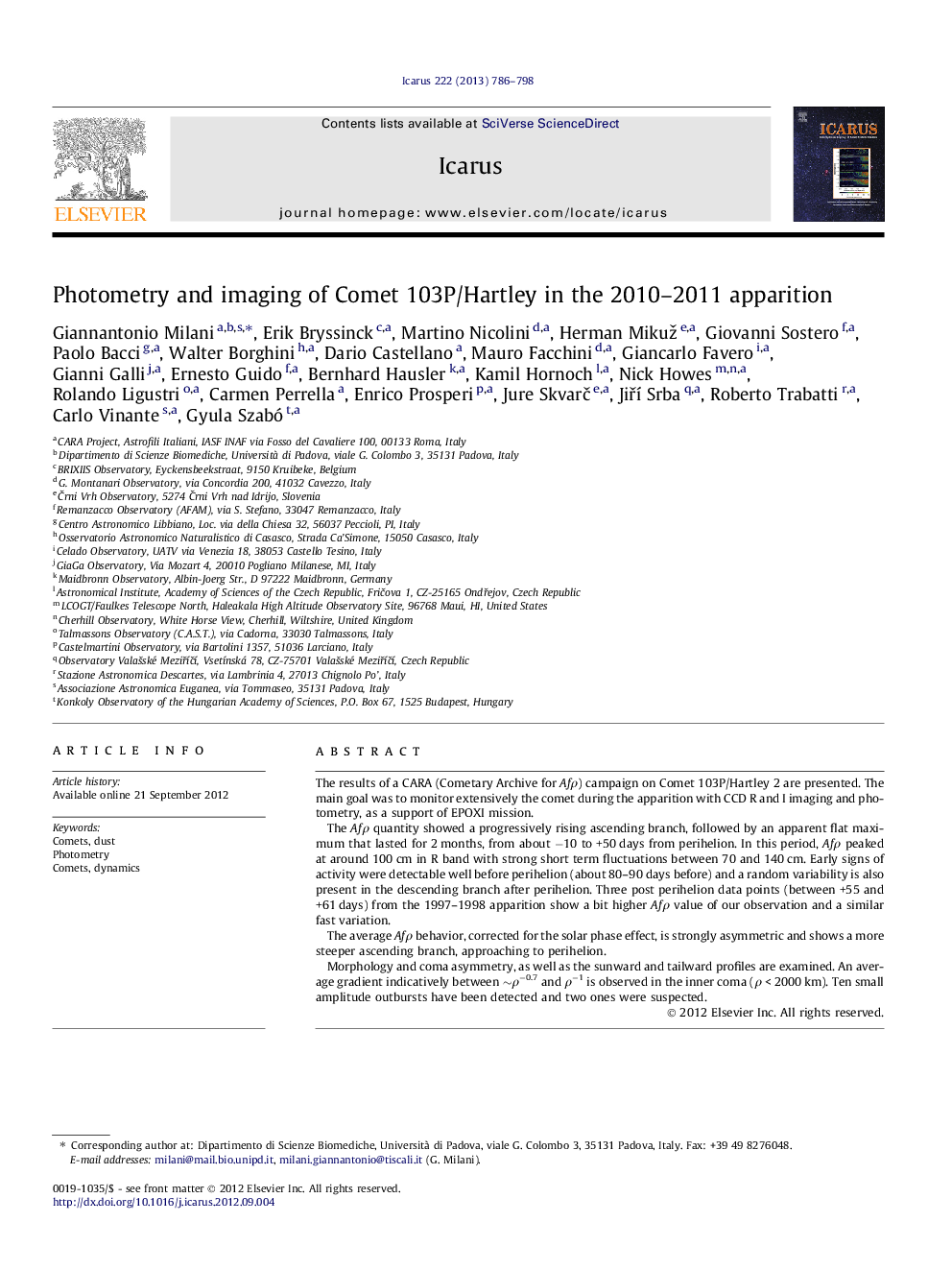| Article ID | Journal | Published Year | Pages | File Type |
|---|---|---|---|---|
| 1773339 | Icarus | 2013 | 13 Pages |
The results of a CARA (Cometary Archive for Afρ) campaign on Comet 103P/Hartley 2 are presented. The main goal was to monitor extensively the comet during the apparition with CCD R and I imaging and photometry, as a support of EPOXI mission.The Afρ quantity showed a progressively rising ascending branch, followed by an apparent flat maximum that lasted for 2 months, from about −10 to +50 days from perihelion. In this period, Afρ peaked at around 100 cm in R band with strong short term fluctuations between 70 and 140 cm. Early signs of activity were detectable well before perihelion (about 80–90 days before) and a random variability is also present in the descending branch after perihelion. Three post perihelion data points (between +55 and +61 days) from the 1997–1998 apparition show a bit higher Afρ value of our observation and a similar fast variation.The average Afρ behavior, corrected for the solar phase effect, is strongly asymmetric and shows a more steeper ascending branch, approaching to perihelion.Morphology and coma asymmetry, as well as the sunward and tailward profiles are examined. An average gradient indicatively between ∼ρ−0.7 and ρ−1 is observed in the inner coma (ρ < 2000 km). Ten small amplitude outbursts have been detected and two ones were suspected.
► We performed a long term monitoring of the comet extending far before and after the EPOXI spacecraft encounter. ► The asymmetric photometric behavior is examined and growing and fading Afρ rates are determined. ► The periods characterized by short term variability are examined. ► Ten small outbursts have been detected, two suspected. ► The coma asymmetric shape and gradient are examined.
